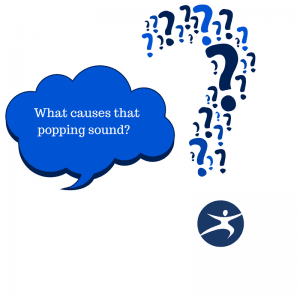As a Chiropractor one of the many techniques I use and probably the technique Chiropractors are most famous for is manipulation. Manipulation involves a quick, specific movement of a joint and is often accompanied by a popping or clicking sound. But what causes that popping sound during manipulation? The proper technical name for this sound is joint cavitation.

Is your back out?
I am often told by patients that their back is “out” and they need me to “put it back”. Is the pop the back going back in? Modern science has now shown that this is not the case and a patient’s back is not “out.” If it was manipulation certainly would not be appropriate. So when people have back pain or neck pain and their back is manipulated what is the sound? Is it the bones cracking? Again this is not the case, although it might sound like it is.
So what causes that popping sound?
A researcher and Chiropractor called Dr Greg Kawchuck and his team at a University in Canada looked at this to try and find out the answer. They observed the joint “pop” in real time under an MRI scanner.
Here is a link to his research paper
Joints in the body are lubricated by something called synovial fluid. When the space between the two bones or joint surfaces is increased this causes gasses present within this fluid to form a bubble. This bubble then pops. It is the formation of the bubble that causes the popping sound. The posh scientific name for this is tribonucleation.
So how does manipulation work and is this pop important?
Manipulation has been shown to be effective in the treatment of many musculoskeletal issues such as back pain and neck pain and is recommended in the NICE guidelines as an effective treatment. But how does it work and is the pop important? The mechanism of how manipulation works is complex and not a case of pushing the bones back into place because they are out of line. I will talk about the mechanism of how manipulation works in a future blog but these mechanisms still work with or without the pop. Although it can sometimes be nice for the patient to hear the pop as it confirms something has been done, it is not essential for therapeutic benefit.
Thanks for reading
Mark
